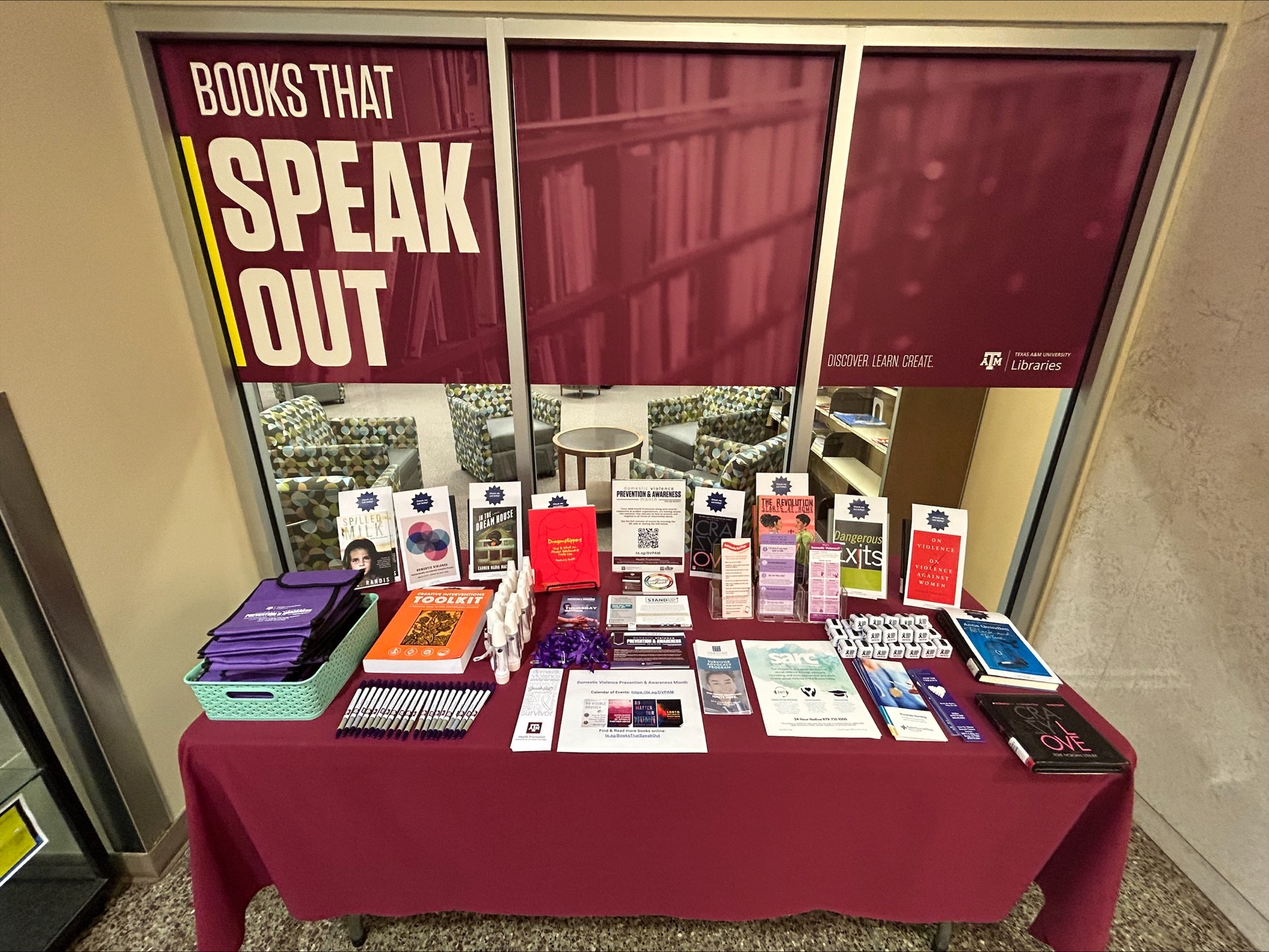Small Steps Towards Big Change
Health Promotion hosts programs for Domestic Violence Prevention and Awareness Month.
By Olivia Garza '23, Texas A&M Division of Marketing & Communications-Student Affairs

Books that Speak Out Resource Display in Evans Library
Health Promotion
When people think of domestic violence, they might think of violence in a family unit. However, this issue isn’t confined to the walls of a suburban home. Domestic violence can be physical, sexual, emotional, economic, psychological, or technological actions or threats. Power-based personal violence, which includes but is not limited to domestic violence, can occur between friends, roommates, coworkers or in any relationship. It can happen anywhere, and it happens here. For example, In 2019 42.7% of students at Texas A&M said they had experienced sexual harassment from another student, faculty or staff member.
October is Domestic Violence Prevention and Awareness Month. Health Promotion in Student Life is working to bring programs and resources to campus that facilitate conversations about domestic violence and offer support to survivors. From Books That Speak Out – a collaboration between Health Promotion and Texas A&M Libraries that highlights pieces of media related to domestic abuse – to trauma-informed yoga, there are a variety of ways to get involved throughout the month of October.
Advocacy looks different for every individual. For some, like the Health Promotion team, it’s something they do on a daily basis. For others, it’s something they do through informing themselves and being prepared to have those tough conversations when they arise. Green Dot Bystander Intervention Training and Stand Up Trauma-Informed Care Workshop are two programs facilitated by Health Promotion that can help members of our campus community learn to advocate for victims of domestic violence or other abuse.
For those that want to help but aren’t quite ready to approach those big conversations, an event like Silent at the Disco might be more approachable. “It’s a way for people to take care of themselves,” Health Promotion Coordinator Dr. Denise Crisafi said. “They don’t necessarily have to engage in a conversation about domestic violence, but they can get resources and have an outlet through movement.”
While all these programs sound great, it’s easy to question what impact wearing purple or participating in trauma-informed yoga can have on domestic violence.
“You can't have prevention without awareness,” Crisafi said. Prevention starts with providing individuals with the tools they need to have hard conversations and pass along resources to those who need them. “It seems like something really small, but when you're interfacing with someone who's experienced this issue firsthand and they've reached out for help, you may be the person who makes the difference,” Crisafi said.
Domestic and sexual violence weren’t criminalized in the United States until 1994, so the dialogue around these issues is relatively young. By talking about domestic violence on campus, more members of the campus community can learn about resources to support victims and be better equipped to recognize the signs of domestic violence. Continuing these conversations also creates a place where victims feel more comfortable speaking out and seeking help.
Even if participating in a program this October feels like a small step, taking small steps can add up to big change.
A full list of Health Promotion’s Domestic Violence Prevention and Awareness Month programming can be found here.

